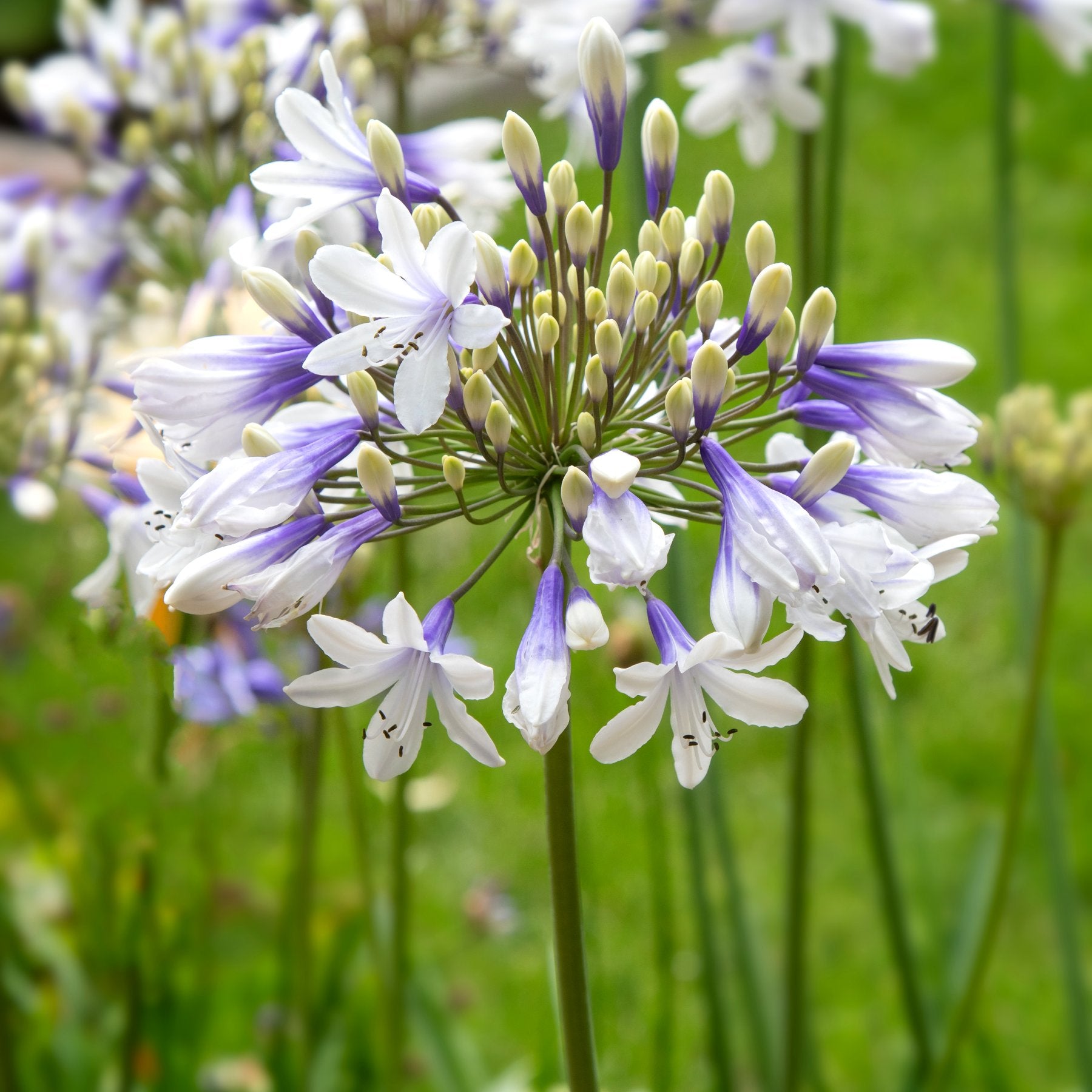Just how to Plant and Maintain Agapanthus in Your Yard
Just how to Plant and Maintain Agapanthus in Your Yard
Blog Article
Grasping the Art of Agapanthus Care: Important Steps for Healthy And Balanced Development and Vivid Blossoms
In the world of horticulture, the farming of agapanthus stands as a satisfying venture for those who look for to support these classy flowering plants. From choosing the ideal variety to grasping pruning strategies, the journey towards growing flourishing agapanthus plants is multifaceted and holds the essential to opening the full potential of these agricultural gems.

Selecting the Right Agapanthus Variety

When picking the right Agapanthus range for your yard, think about elements such as environment suitability, bloom shade, and development routine. In addition, think about the climate in your region to make sure the Agapanthus selection you select can flourish in your particular conditions. Recognizing the growth behavior of different Agapanthus varieties is critical for proper positioning within your garden.
Perfect Planting Problems
Taking into consideration the optimum ecological demands is essential for effective Agapanthus cultivation. Agapanthus plants are sensitive to cool temperatures and need to be protected from frost during winter months.
To ensure healthy and balanced development and lively blooms, plant Agapanthus bulbs at a depth of concerning 2-4 inches and space them 8-12 inches apart. Mulching around the base of the plants helps retain dampness and suppresses weed development.
Watering and Feeding Tips
Keeping appropriate moisture degrees and offering crucial nutrients are crucial elements in the treatment regimen for Agapanthus plants. It is vital to strike a balance when it comes to watering Agapanthus. If overwatered, these plants choose constantly damp soil but are susceptible to root rot. Throughout the growing season, water deeply when a week, making certain the soil is well-draining to avoid waterlogging. In hotter environments or during periods of dry spell, even more regular watering may be necessary to keep the dirt evenly damp. Nonetheless, lower watering in the winter to avoid water logged conditions.
Feeding Agapanthus is vital for advertising healthy development and prolific flowers. Use a balanced plant food, such as a 10-10-10 formula, in the very early springtime as brand-new development arises. Repeat this application every 6-8 weeks throughout the growing season. Prevent too much fertilizing, as it can lead to lush foliage at the cost of blooms. Constantly comply with the producer's directions for appropriate dilution and application methods. By complying with these watering and fertilizing suggestions, you can guarantee your Agapanthus plants flourish and generate vivid, lasting blossoms.
Pruning Strategies for Agapanthus
Trimming Agapanthus plants at the appropriate times and with correct techniques is crucial for keeping their health and advertising optimum growth and flowering. The perfect time to prune Agapanthus remains in late winter or very early springtime before new development emerges. Start by eliminating any kind of dead or yellowing leaves near the base of the plant. Cut them as short as possible without damaging the emerging shoots.
For flowered stems, wait till the flowers have actually perished and afterwards cut them back to the base. This not just cleans up the plant's appearance yet also encourages the development of brand-new blossom buds. Deadheading spent blossoms can additionally reroute the plant's energy into producing more blooms instead of setting seeds. However, if you wish to gather seeds for breeding, leave some blossoms to mature and completely dry on the plant.
Keep in mind to use clean, sharp devices to make accurate cuts and lower the threat of introducing diseases. Agapanthus. Routine pruning will certainly aid keep your Agapanthus looking cool and healthy and balanced while ensuring a bountiful screen of attractive blossoms
Taking Care Of Typical Insects and Conditions
After making sure proper pruning methods for Agapanthus, it is important to resolve typical pests and illness that can impact the health and wellness and vitality of these plants. Agapanthus plants are usually sturdy however can still come down with certain concerns. One common parasite that influences Agapanthus is the Agapanthus gall midge. This tiny, orange fly lays its eggs in the vegetation, leading to distorted growth and blossom buds that stop working to open. To battle this parasite, trim and ruin any afflicted plant parts and take into consideration making use of insecticidal soap.
Another common concern is fungal leaf place, which provides as dark lesions on the fallen Look At This leaves. To stop fungal conditions, make certain great air circulation around the plants, avoid visit the site overhanging watering, and eliminate any type of infected fallen leaves quickly. In addition, Agapanthus plants can deal with origin rot if they are grown in badly draining pipes dirt. To avoid this, plant Agapanthus in well-draining soil and avoid overwatering. By being attentive and taking prompt action versus pests and illness, you can aid your Agapanthus plants thrive and produce dynamic blossoms.

Final Thought
Finally, understanding the art of agapanthus treatment includes selecting the best variety, giving suitable growing conditions, correct watering and feeding, ideal pruning methods, and attending to typical parasites and diseases. By complying with these necessary steps, you can make sure healthy development and dynamic flowers for your agapanthus plants. Bear in mind to on a regular basis check and preserve your plants to advertise their overall health and durability.
To make sure healthy and balanced development and dynamic blooms, plant Agapanthus bulbs at a depth of about 2-4 inches and room them 8-12 my company inches apart. By complying with these watering and fertilizing pointers, you can guarantee your Agapanthus plants flourish and produce vibrant, durable blooms.
One common pest that affects Agapanthus is the Agapanthus gall midge. In addition, Agapanthus plants can experience from origin rot if they are grown in inadequately draining pipes soil. By adhering to these necessary actions, you can ensure healthy and balanced development and lively flowers for your agapanthus plants.
Report this page